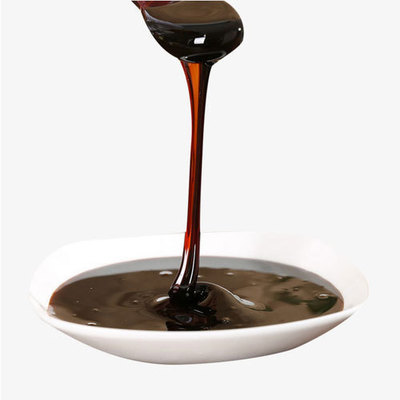That massive spike of 50c/kWh at the left looks tiny compared to today even though that’s already insanely expensive
Tomorrow is back to normal. Even the 37c/kWh spike hardly registers on the graph compared to today even though that’s still pretty expensive.

Are you actually paying the daily spot price? Not a flat amount with the utility provider taking the hit? That’s how I know it from any other country, unless you have a specific contract where the user made an informed decision to opt for market rates.
Mainly the reason is that many countries do not have hourly capable meters, so calculating the price for each hour is not possible. Flat rate is needed when you just have the cumulative read once a month.
In Finland the meters communicate automatically once a day, and send the 24h values to grid company. The next generation meters which are now installed can communicate once a hour.
30% of Finns are on spot.
Oh interesting, never knew that’s a thing. Sounds mostly like a good development to make people more conscious about their consumption.
Sounds more like an incentive to put up solar panels and battery storage. Even if it isn’t enough to go off grid totally, you can at least store on cheap days.
Spot is quite normal in the Nordics. Over all it’s the cheapest, but some days suck obviously.
This summer we had days with negative prices. My bill for July was 78 NOK (about $8). Might have been August when I think about it…
Yeah about 30% of Finns have a plan lile that. It’s bit of an gamble, but on average it’ll be cheaper on the long run.
40c/kWh is a pretty normal price here in Germany…
Ironically, prices are high, because of too much extremely cheap renewables.
Bullshit. Check the prices around Christmas last year, Germany was running only on renewables on the 24th and I paid .19€/kWh all day long then.

Do you really think, that’s what anyone pays? Because that’s not how consumer contracts work. You’re paying whatever you agreed upon when signing the contract.
Source: https://www.stromauskunft.de/strompreise/
This was literally 10s of google. Is that so hard?
Yes, that’s what I pay. That’s what my contract works like.
And on average, you’ll pay just as much as everyone else. If prices go through the roof, you’ll get screwed. See 2022.
Nope. More than 80% of my usage comes from heating and driving and I’ve heavily optimized car charging and heat buffering to make use of low cost times.
Heating can only be optimized for about 24h periods, that’s why I can supplement my heating with wood from my own forest.
Driving, between April and October pretty much only happens using electricity from my own roof, between May and September the entire house uses less than 100kWh from the grid.
Before I signed at Tibber, I had of course compared my recorded load profiles including simulations for automated usage optimization against EPEX 60min day-ahead prices and I would have been at less than 0.23€/kWh on average since 2020, including the high prices of 2022.
wow that is crazy. my bill for December was $77 in the US.
Finland has more than 330 hydro power plants, with total capacity of over 3,100 megawatts in 2022. Hydro accounted for 18% of Finland’s total installed power generation capacity and 22% of total power generation in 2021.
WTFINLAND
Hydro-Québec Production main power plants (2020) Total Others (49 hydro, 1 therma) - 13302 MW
Hydro =/= hydro. The plants in Finland are tiny in comparison.
Finland is flat, no possiblity in hydro if you don’t have the mountains with water in them. Norway gets all the hydro, and Finland buys it there.
Canada has 85% of the worlds freshwater. There are a crazy amount of big rivers. Its not really a fait comparison.
This is Québec only. Other provinces that have more water and hills still have less hydro.
I don’t think the fact that Finland is north and cold and icy is a factor either. A lot of Québec’s power generating stations are in the desolate north, with some of the biggest ones on rivers flowing into the Hudson’s Bay, and they were built in the 70s.
However looking at the relief and hydro and topo maps of Finland, while there’s plenty of lakes, there’s no strong rivers. Couple this with an apparent ban on new hydro, and we got the answer.
I wonder how they’d fare with geothermal.
What was the price before the Ukrainian war?
You could get fixed price plans for around 5c/kwh. However take into account that yesterday was an anomaly. The average price for the last 28 days is 12.65c/kWh. During the summer time it was around 1 to 3c/kWh.
Get her a space heater, you won’t even notice the difference in your bill.
I recommend getting one that blows air instead of one that just heats oil. I’ve used both types, and the one that blows air is way more effective.
Staying warm is not the issue. It’s the price for that comfort. Running a 1kW space heater for 24 hours at yesterday’s prices would have cost a little over 26 euros.
If you’re in a granny cottage then just burn wood instead? Doing this rn and am very happy to go off-grid for ca. 48 hours
I unfortunelately don’t have a fireplace in my house. It was removed when the house was renovated in the 80’s
In a place where it’s regularly cold? Whose brilliant idea was that?!
When I said my house is tiny I truly mean that. I don’t even have space for a medium size house plant let alone a fireplace. The attic was converted into living space and I believe the fireplace used to be where the stairs are now.
I have a wood burning sauna on a separate building though
Diesel heater set up properly maybe the way, just not sure how well it would work kept outdoors at those temperatures.
So you’re BigDickEnergy in a granny cottage, heating the place with your wood to get off grid. Nice!
i keep a pile of coal in the cellar for the extra cold days
To do what with? Light a coal fire in the living room?
It doesn’t sound safe even in a proper fireplace.
found one whose never felt the heat of a coal stove
it’s handy to have backup heat source when the power goes out so pipes don’t freeze
Nope, I am far too young for that.
I have never heard of anyone that currently has a coal-heated house. I thought it was entirely dead in the developed world. Here these heating options are common district heating, geothermal, direct electric heating, some other kind of heat pump, biofuel (like pellets), and a tiny bit of oil and gas.
The most popular by far is district heating, after that comes electric heating (which includes electricity used for geothermal heat pumps and other kinds) and then biofuel. Gas and oil are barely visible on a graph.
I just tried to find a place in my country which sells coal for heating but alas I didn’t succeed. You can of course buy coal but its intended purpose is always grilling or smithing.
Your thinking of charcoal, which are chunks of wood converted into almost pure carbon by heating them above their combustion temperature in a low oxygen environment. He was talking about coal that was mined out of the ground. Plants from an ancient swamps that didn’t decompose, but were converted into almost pure carbon from millions of years of heat and pressure from being buried.
No.
I don’t think any type of coal heating has existed for homes in quite a long time in my country.
I honestly thought it was phased out decades ago in pretty much the entire western world.
I have electric! The coal stove is backup, some people use wood as a backup. It’s not uncommon
And then you just burn them in a pot on your table and breathe the exhaust?
That is an insane price, and it feels like it should be illegal.
Further integration at an EU level would allow energy supply to be less influenced by local issues.
Crazy how it is with dynamic electricity price. Must be extremely inconvenient to monitor and react!
Here a border away in Saint Petersburg, Russia, we have electricity at a fixed rate of 4,9c/kWh in daytime and 2,7c/kWh in the night. There aren’t any variable price tariffs in here, so the bill is always about the same.
We also have central heating (part coal/gas, part nuclear) that goes for 21€/Gcal (1,8с/kWh), so there is no need to expend electricity.
what the fuck?
How are you using 21kWh/day heating a small home? Do you have any insulation at all?
Probably because it’s about -35C outside.
Dude is basically living on the set of The Thing at this point.
That’s a perfectly normal number for any home that isn’t very new and perfectly insulated.
My 37sqm appartment needs approximately 5000 kWh in natural gas per year, 876 kWh last December, so 28 kWh per day on average. The building is admittedly old and not perfectly insulated but it’s also not a log cabin out in the open in Finland, but instead a flat enclosed within 3 other flats in the middle of cosy, never below -8C Germany.
21 kWh in a log cabin in Finnland actually seemed pretty low to me. It’s sort of obvious OP is using a heat pump and the cabin must really be absolutely tiny.
Just because I love numbers
I live in a desert climate and I have an all electric two bedroom, two bathroom, attached home. The unit has an area of 109sqm. Over the course of the year my monthly average is 622 kWh. This includes times where I run the roof-mounted air conditioning unit all day and its 46C outside. It actually becomes hotter when the sun goes down before getting cooler again because the ground absorbs heat during the day and it radiates back out to space at night passing through the city. I only use air conditioning for 4.5 months a year, the rest of the time I open the windows and use fans.
2022 Average: 622.6667 kWh or 20.755
2022 Air conditioning months average (June - September): 828 kWh or 27.625 daily
2022 Non air conditioning months average (including May which is partial): 519.625 kWh or 17.320 daily
The daily numbers lose some fidelity because I’m lazy and divided the averages by 30.
This is my total energy usage including my hot water heater, two computers, TV, electric stove, often used oven, lighting, fans, and various small appliances. You figure that the rough average air conditioning energy usage is the difference between the daily averages or 10.304 kWh per day and 309 kWh per month
Considering urban development where I live is nearly water neutral and I have a mix of solar power and natural gas generation, it is funny to me because people in northern parts of my country tell me about how where I live must be somehow more unsustainable than where they do. My region also grows a significant portion (read 90% of the total) leafy green vegetables they eat year round.
Why are you measuring natural gas in kWh? How do you even measure that as such?
Very common in countries that use the metric system (ie literally everywhere except the USA). It’s measured either in kWh or in m^3
Cubic meters (or another similar measure of volume) is what I’d expect. It’s the conversion to an unrelated and theoretical (since it’s not actually being converted to electricity) unit that confuses me. I presume it’s to make it easier to compare electric vs gas heat, but the variable efficiency of burning gas and the existence of heat pumps ruin that.
My meter measures it in m3 and my supplier, knowing the exact caloric value of the product they’re selling, tells me in kWh on my bill.
edit: m3 of course not 2 lol
A tiny heater running all day would do that.
1kw is a small heater. 0.8kw is a tiny one. 0.8x24 is 19.2. Assuming they have other basic appliances, that’s already more than enough to account for their usage.
50kWh and closer to 90kWh on days like this. It’s a log cabin and I’m keeping my root cellar and insulated shed above freezing aswell. Even running a 1kW heater all day would result in a consumption more than 21kWh and that wouldn’t keep any house warm.
Outer walls in new homes in the Nordic countries are often 25-30 inches thick filled with insulation. They will keep out some cold (and some heat).
Is heating with electricity common in Finland? That seems like it would cost a fortune even in good times.
Older houses burn oil for heating the house and water but even most of them have heatpumps installed. New houses usually also have heatpumps or geothermal so direct electric heating is more and more uncommon. Apartment buildings generally all have district heating and even some private homes do.
Yes it’s expensive but so is everything else too. Our houses are way better insulated than in most places though so that helps a little.
Overall electricity is relatively cheap in Finland. Historically they were oil heated, which is not very cheap either.
We do not have gas lines in Finland, so we cannot use that like other parts of Europe. This is now of course better because we are not depending on Russian gas.
Previously we got parts of electricity from Russia, but that shutdown after the Ukraine war.
Pretty common here in France and it’s cheap enough. Why would you think it would be expensive? And expensive compared to what?
When you say it’s common, are you talking about heat pumps or old-fashioned resistive heating? I’m not very familiar with heat pumps since they weren’t common at all when and where I bought a house, but at least where I lived it was normal to have either an oil or a gas furnace for heating. Resistive electric heating cost a lot more to operate and so it was generally used only where it would be too difficult or expensive to install a furnace and hot water pipes or hot air ducts. For example, some friends of mine lived in a 19th century house which was meant to be heated by a wood fireplace and they also had electric heaters in the bedrooms, whereas my own house was built in 1980 so it had an oil tank, a furnace in the basement, and hot-water radiators.
(My own house also had a modern wood stove in the living room and buying firewood was even cheaper than buying heating oil, but the problem was that the wood stove took a lot of work and it only heated the living room since it wasn’t connected to any mechanism for spreading the heat to the rest of the house.)
Heat pumps have been commonplace outside North America for a long time. We call them “reverse cycle air conditioners” in Australia and they’ve been around for at least 20 years.
It’s not new technology. Your fridge is also a heat pump for example.
I was talking about the old-fashion one. It’s really common across France even though modern housing have heat pumps. Oil furnaces have almost completely disappeared and the gas one are in the process of being replaced as well. Electricity is cheaper here than in most countries (thanks to nuclear power plants).
Someone said -45.5 °C

Calls on Foam and Mineral Wool?
Polyurethane is better insulator, doesn’t absorb moisture and doesn’t require a vapor barrier but is also much more expensive. It’s what I insulated my shed with so that I can let it get cold if need be and will not have moisture problems later.
I always underestimate oil biproducts in the market, but maybe that is the play.
If available in your area, Wood fibre is often a better option than mineral wool.
Wouldn’t that be a fire hazard?
Wood fiber will burn slowly without any toxic fume. Its not perfect but better than most oil derived products.
What’s the average price during normal times? In Germany we are usually paying a fixed price, so fluctuations on the market do not reach the customers. However, this price is somewhere between 30 and 40c/kWh.
On average winter days it’s around 10 to 15c/kWh and in summer like 5 cents or less. Some days in the summer the price literally goes negative.









